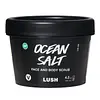What's inside
What's inside
 Key Ingredients
Key Ingredients

No key ingredients
 Benefits
Benefits

 Concerns
Concerns

 Ingredients Side-by-side
Ingredients Side-by-side

Salicylic Acid 2%
MaskingWater
Skin ConditioningSodium C14-16 Olefin Sulfonate
CleansingGlycerin
HumectantCocamidopropyl Betaine
CleansingPolyethylene
AbrasiveAcrylates Copolymer
Chondrus Crispus
MaskingC12-15 Alkyl Lactate
EmollientDisodium EDTA
Cocamidopropyl Pg-Dimonium Chloride Phosphate
Citrus Grandis Fruit Extract
AstringentPolyquaternium-7
Camellia Sinensis Leaf Extract
AntimicrobialAscorbyl Palmitate
AntioxidantNeopentyl Glycol Dicaprylate/Dicaprate
EmollientAnthemis Nobilis Flower Extract
MaskingPolysorbate 20
EmulsifyingPolyvinyl Alcohol
Propylene Glycol
HumectantSodium Chloride
MaskingBenzalkonium Chloride
AntimicrobialButylene Glycol
HumectantSodium Benzotriazolyl Butylphenol Sulfonate
UV AbsorberAgar
MaskingAlumina
AbrasiveMica
Cosmetic ColorantTitanium Dioxide
Cosmetic ColorantSodium Hydroxide
BufferingCI 15850
Cosmetic ColorantCI 16035
Cosmetic ColorantCI 60725
Cosmetic ColorantParfum
MaskingSalicylic Acid 2%, Water, Sodium C14-16 Olefin Sulfonate, Glycerin, Cocamidopropyl Betaine, Polyethylene, Acrylates Copolymer, Chondrus Crispus, C12-15 Alkyl Lactate, Disodium EDTA, Cocamidopropyl Pg-Dimonium Chloride Phosphate, Citrus Grandis Fruit Extract, Polyquaternium-7, Camellia Sinensis Leaf Extract, Ascorbyl Palmitate, Neopentyl Glycol Dicaprylate/Dicaprate, Anthemis Nobilis Flower Extract, Polysorbate 20, Polyvinyl Alcohol, Propylene Glycol, Sodium Chloride, Benzalkonium Chloride, Butylene Glycol, Sodium Benzotriazolyl Butylphenol Sulfonate, Agar, Alumina, Mica, Titanium Dioxide, Sodium Hydroxide, CI 15850, CI 16035, CI 60725, Parfum
Sodium Chloride
MaskingCitrus Paradisi Juice
PerfumingStearic Acid
CleansingCitrus Aurantifolia Peel
Skin ConditioningSodium Cocoamphoacetate
CleansingGlycol Cetearate
EmollientTriethanolamine
BufferingPersea Gratissima Butter
Skin ConditioningCocos Nucifera Oil
MaskingFucus Vesiculosus
Skin ConditioningViola Odorata Leaf Cera
MaskingGlycerin
HumectantLanolin
EmollientCetearyl Alcohol
EmollientCitral
PerfumingLimonene
PerfumingLinalool
PerfumingParfum
MaskingBlue 1 Lake
Cosmetic ColorantMethylparaben
PreservativePropylparaben
PreservativeSodium Chloride, Citrus Paradisi Juice, Stearic Acid, Citrus Aurantifolia Peel, Sodium Cocoamphoacetate, Glycol Cetearate, Triethanolamine, Persea Gratissima Butter, Cocos Nucifera Oil, Fucus Vesiculosus, Viola Odorata Leaf Cera, Glycerin, Lanolin, Cetearyl Alcohol, Citral, Limonene, Linalool, Parfum, Blue 1 Lake, Methylparaben, Propylparaben
 Reviews
Reviews

Ingredients Explained
These ingredients are found in both products.
Ingredients higher up in an ingredient list are typically present in a larger amount.
Glycerin is already naturally found in your skin. It helps moisturize and protect your skin.
A study from 2016 found glycerin to be more effective as a humectant than AHAs and hyaluronic acid.
As a humectant, it helps the skin stay hydrated by pulling moisture to your skin. The low molecular weight of glycerin allows it to pull moisture into the deeper layers of your skin.
Hydrated skin improves your skin barrier; Your skin barrier helps protect against irritants and bacteria.
Glycerin has also been found to have antimicrobial and antiviral properties. Due to these properties, glycerin is often used in wound and burn treatments.
In cosmetics, glycerin is usually derived from plants such as soybean or palm. However, it can also be sourced from animals, such as tallow or animal fat.
This ingredient is organic, colorless, odorless, and non-toxic.
Glycerin is the name for this ingredient in American English. British English uses Glycerol/Glycerine.
Learn more about GlycerinParfum is a catch-all term for an ingredient or more that is used to give a scent to products.
Also called "fragrance", this ingredient can be a blend of hundreds of chemicals or plant oils. This means every product with "fragrance" or "parfum" in the ingredients list is a different mixture.
For instance, Habanolide is a proprietary trade name for a specific aroma chemical. When used as a fragrance ingredient in cosmetics, most aroma chemicals fall under the broad labeling category of “FRAGRANCE” or “PARFUM” according to EU and US regulations.
The term 'parfum' or 'fragrance' is not regulated in many countries. In many cases, it is up to the brand to define this term.
For instance, many brands choose to label themselves as "fragrance-free" because they are not using synthetic fragrances. However, their products may still contain ingredients such as essential oils that are considered a fragrance by INCI standards.
One example is Calendula flower extract. Calendula is an essential oil that still imparts a scent or 'fragrance'.
Depending on the blend, the ingredients in the mixture can cause allergies and sensitivities on the skin. Some ingredients that are known EU allergens include linalool and citronellol.
Parfum can also be used to mask or cover an unpleasant scent.
The bottom line is: not all fragrances/parfum/ingredients are created equally. If you are worried about fragrances, we recommend taking a closer look at an ingredient. And of course, we always recommend speaking with a professional.
Learn more about ParfumChances are, you eat sodium chloride every day. Sodium Chloride is also known as table salt.
This ingredient has many purposes in skincare: thickener, emulsifier, and exfoliator.
You'll most likely find this ingredient in cleansers where it is used to create a gel-like texture. As an emulsifier, it also prevents ingredients from separating.
There is much debate on whether this ingredient is comedogenic. The short answer - comedogenic ratings don't tell the whole story. Learn more about comegodenic ratings here.
The concensus about this ingredient causing acne seems to be divided. Research is needed to understand if this ingredient does cause acne.
Scrubs may use salt as the primary exfoliating ingredient.
Learn more about Sodium Chloride